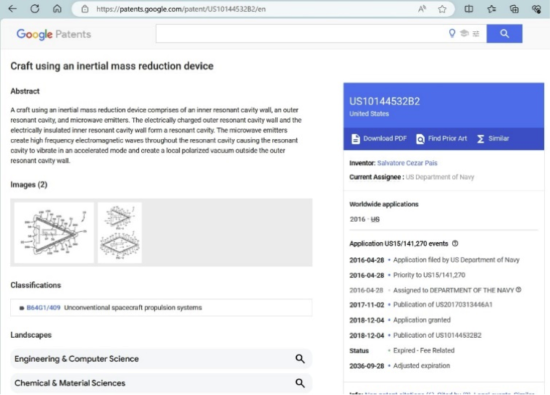OP ED: Looking Back to the Future

LOOKING BACK TO THE FUTURE
by David Drew
At the beginning of the last century, it was thought an improved understanding of electromagnetism offered the best way forward for astronomy. It is easy to feel frustrated, therefore, at the pace of progress in the space sciences. Although most sciences have come on in leaps and bounds in recent decades, cosmology (the study of the nature of the universe) has fallen behind.
Sure, space missions have enjoyed many remarkable successes, but is this a testament to the technicians or the theoreticians? The latter are continually surprised by findings that almost always contradict expectations.
It is surprising that they continue to be surprised by all the surprises.
Wal Thornhill
The James Webb Space Telescope has ramped up the cognitive dissonance recently, with one astronomer even crying “Panic!” The spiraling, filamentary structure of the universe now seen more clearly than ever is expected from an electrical and plasma perspective, of course.
There are two basic reasons for the foot-dragging that characterizes astrophysics today.

Firstly, it works with only one tool in its box — gravity. Theories based on the gravity-only premise were codified back when oil and gas provided the lighting, and have since solidified into dogma. Although electricity plays a big part in our modern world, needless to say, bizarrely it has yet to find its way into the lexicon of cosmology, at least in any meaningful way.
Secondly, astrophysics today is dominated by mathematicians — some say ‘math-magicians’ — and factoring in plasma and electromagnetism would mess up their elegant equations. It’s easier to turn a blind eye. Hannes Alfvén — the father of plasma physics and plasma cosmology — injected some wit into the situation:
To the extent that the laws of the underlying assumptions of cosmologists today are developed with the most sophisticated mathematical methods and it is only the plasma itself which does not ‘understand’ how beautiful the theories are and absolutely refuses to obey them. refer to reality, they are not true; and to the extent that they are true, they do not refer to reality
Hannes Alfvén
Although some magnetism is stirred into standard models, this is only a baby step in the right direction. It is sometimes amusing when consensus scientists claim they don’t ignore electrodynamics, while simultaneously admitting to their disdain for the subject. This quote from Dr Phil Plait, aka the Bad Astronomer, underlines their quandary.
Magnetism is a very important topic in astrophysics (despite some pseudo-scientists lying and saying this force is ignored), but it’s not well-understood. It’s fiendishly complex, so much so that it’s a joke in astronomy.
Dr. Phil Plait
Alfvén, again, put the real issue more succinctly.
In order to understand the phenomena in a certain plasma region, it is necessary to map not only the magnetic but also the electric field and the electric currents.
Hannes Alfvén
Despite flying in the face of consensus for most of his career, Alfvén was eventually awarded the Nobel Prize for Physics in 1970. His criticism of the Big Bang, it has to be said, rankled with the powers that be. He was not known for pulling his punches. Here’s another classic Alfvén uppercut.
Students using astrophysical textbooks remain essentially ignorant of even the existence of plasma concepts, despite the fact that some of them have been known for half a century.
Hannes Alfvén
Before Alfvén, another Scandinavian, Kristian Birkeland, provoked controversy when he demonstrated that the auroras were electrically powered with his famous Terella experiments. Now recognized as fact, his work was initially laughed at.
A timeline is emerging. In 2024 we can now safely say that the importance of plasma and electromagnetism in space has been downplayed, when not dismissed or ignored, for more than a century! It seems science took a wrong turn when idealized gravity-only models, based largely on mathematical speculations, began to take precedence over traditional empiricism. Some blame Einstein for this, although in my recent blog, Einstein and the Cult of Celebrity, I argue that he was as much a victim as a genius.
As far as the laws of mathematics refer to reality, they are not certain; and as far as they are certain, they do not refer to reality. Once the mathematicians have invaded the theory of relativity, I do not understand it myself anymore.
Albert Einstein
Science is supposed to be a self-correcting mechanism. The question, therefore, arises — how long will it take before plasma and electromagnetism find their rightful place at the heart of cosmology?
More symptoms of the malaise
The growing complexity of the space sciences is another big giveaway. Most scientific advances are characterized by simplicity. Computer processors, for example, grow faster and more efficient with fewer connections, much like automatic gearboxes in motor vehicles that require fewer moving parts than manual (stick control) mechanisms.
Nature also abhors inefficiency, or so we are told. It seems strange, then, that she would ignore the utility of the electric force given that it is 10 ^ 39 stronger than gravity.
And even if one regards the electric fields as merely another postulate, it has the great advantage that it is the one postulate which, in my view, renders all the others unnecessary.
C. E. R. Bruce
Cosmology right now, it can’t be denied, relies on an ever-expanding array of exotic hypotheticals like Dark Matter and Dark Energy. They’re required to paper over the cracks and, as if this wasn’t bad enough, they are also called upon to behave in truly magical ways; hiding from observation while simultaneously shaping galaxies. To make things worse, such speculations are all too often talked about as if they were beyond reasonable doubt. So much for Occam’s razor.
It is an embarrassment that the dominant forms of matter in the universe remain hypothetical!
Jim Peebles, Princeton
Reasons to be cheerful
Research papers acknowledging the role of electricity in space are breaking through with increasing regularity, even if academic papers researching dark stuff still outnumber them many times over.
Interestingly, some of these papers appear to tone down their terminology, perhaps cognizant of the fact that something of a taboo still applies to electricity in space.

The Coulomb Universe is just another way of saying electric universe, of course. There are more examples. Here we can see tentative steps away from imaginary dark stuff towards EM.

This paper from 2017 is more bold. It is titled “The External Energy Supply To The Sun Is Overwhelmingly Obvious And Has Recently Been Detected By Space Probes,” and, atop page 5, it reminds us that “Under the standard solar model the origin and mechanism of the sun’s magnetic field are still mysterious.”
The door is ajar and the plasma universe is pushing — with some papers occasionally getting through — but there are boots behind it. These metaphorical boots are Peer review and, well, just sheer bloody-mindedness. Sooner or later, though, the door will give.
The peer review system often creates near-insurmountable hurdles against the publication of data that seems contrary to long-held beliefs.
Dr. Friedmann T. Freund
Consider the following quotes that highlight the science vis-à-vis science denial farrago we witness today:
A cosmic jet 2 billion light years away is carrying the highest electric current ever seen: 10^18 amps, equivalent to a trillion bolts of lightning.
Newscientist.com, 2011
The jets have been shown not to be electric currents, the energy and the physics involved are certainly not electromagnetic.
Phys.org, 2011
No explanation is offered for the second quote. Casual dismissal is considered sufficient, presumably. The trouble is that once the door is opened to plasmas and electromagnetism there will be no going back, and they know it.

Back to the future
As mentioned at the outset, there is nothing very new about the plasma or electric universe. It is merely regaining ground that was lost when science took a wrong turn marked gravity-only.
No later than 1937 Alfvén proposed that our galaxy contained a large-scale magnetic field and that charged particles moved in spiral orbits within it, owing to forces exerted by the field. Plasmas carry the electrical currents that create the magnetic field.
While Alfvén was looking at electromagnetism on the grand scale, more than 100 years ago some notables had already gone further. Michael Faraday, for example, often thought about experiments that could connect gravity and electromagnetism.
…no terms could exaggerate the value of the relation they would establish.
Michael Faraday, 1850
Also, In 1908, Henry Poincaré, a gifted all-rounder and Philosopher of Science, said:
What we call mass would appear to be nothing but an appearance, and all inertia to be of electromagnetic origin.
Henry Poincaré
It seems they were looking for simplification in the 19th century, whereas today we seem to be obsessed with inventing new forces and particles. Awards are even handed out for such speculations. Before Faraday, William Weber derived an electrical gravitational force law and even had a planetary model of the atom. This was 40 years before Bohr and Rutherford.
Today, most textbooks will tell us that electromagnetism and gravity must be unconnected because EM can be shielded whereas gravity cannot. Such a view is too simplistic, however.
Interestingly, in 2016 the US dept of Navy filed the following patent application for a mass reduction device utilizing electromagnetic waves. Paraphrasing, the patent states that it works because we live in a “Plasma Universe.”

The Electric Universe represents a paradigm shift. It does not claim to have all the answers, but it will at least point us back in the right direction. The forthcoming revolution in cosmology will herald a new renaissance.
They say the future is what we make it . . . so, strap yourselves in and enjoy the ride in our Electric Universe.
YouTube video — David Drew: Looking Back to the Future | Thunderbolts

David Drew, who hails from the UK, has enjoyed a long interest in science, philosophy, and cosmology. He has been involved with the Electric Universe since around 2004 and published his own website, plasmacosmology.net in 2006. The purpose of his website is to provide an introduction to the emerging Plasma Universe paradigm and to explore some of the many far-reaching implications. David was the first to publish videos promoting EU ideas on YouTube and other video-sharing platforms. One of the most popular of these explores parallels with the work of the cult hero, Nikola Tesla (https://www.youtube.com/watch?v=akM9KNEv_JE). David is also known as The Soupdragon.
Ideas and/or concepts presented in Thunderblogs do not necessarily express or represent the Electric Universe Model of Cosmology or the views of The Thunderbolts Project or T-Bolts Group Inc.












